GENERAL INTRODUCTION OF CIDS – 4DEdu
REFLECTIONS
- The authority concerned has formulated a transformation of education policy & philosophy for the country to fulfill the current 21st century learning needs but……
Do we design our instructions following the needs and aspirations?
- Teachers are enriched with pedagogical knowledge & skills in their pre-service & in-service courses but…..
Do we apply & integrate into our instructional planning?
CIDS – “Collaborative Instructional Design System” – transforming teachers…..inspiring learners…
- To access the system, type https://asiemodel.net
Please use the latest Google Chrome browser with 1280 x 800 screen resolution and above for best viewing
TABLE OF CONTENTS
A. INTRODUCTION
B. AIM
C. ID AND ITS FUNCTIONS
D. TERMINOLOGY
E. THE INTEGRAL ASIE INSTRUCTIONAL DESIGN MODEL FEATURES
F. EVALUATION
G. ENHANCING INSTRUCTIONAL ACTIVITIES
H. OTHER FUNCTIONS & FEATURES
I. BUTTON – FUNCTIONS
J. SUMMARY
Please take note that CIDS is a flexible instructional design tool. You may choose minimum features/items or add optional items to design your instructional planning to cater to your needs. Most of the items are customizable to formulate the instructional activities.
A. INTRODUCTION
(1) Framework & Concept
An initiative towards transforming teachers in designing instruction for delivering effective and efficient learning experiences that inspires learners of all ages.
- CIDS is a system that provides teachers the option to plan & manage the learning and teaching process (including other optional planning features such as Evaluation of Teachers Competency (ETC), Lesson Study – as part of Professional Learning Community activity & virtual learning) professionally and systematically through its Integral ASIE Instructional Design Model.
- The process of planning and managing learning and teaching are implemented following the theories and principles of instructional design (instructional design theories & principles) – a branch of discipline in the field of education technology that has long existed.
- The Integral ASIE Instructional Design Model was developed to meet the needs of 21st Century Learning competencies and to transform the field of instructional design in line with the needs of education today. Besides, it becomes an added value to the knowledge and skills of teachers in the field of instructional design for classroom best practices.
- The elements in Four-Dimensional Education (Center for Curriculum Redesign-CCR, 2015, 2019, US) have been the main reference for adaptation of the 21st century learning in the Integral ASIE Instructional Design Model, besides other elements in current education needs .
- The uniqueness of the innovation of this model is that it has a dual function-(i) as a classroom-based 21-st century instructional design model (ii) as well as a classroom-based 21-st century online instructional design model that simplifies teachers to design the instruction directly on the model by following the planning procedures found on its components, aspects, and items.
The instructional plan can be shared, monitored, guided, and evaluated individually or in bulk by various parties at various levels.
(2) Understanding the planning concept of CIDS
- CIDS instructional plan – user creates a record (term used to refer to teaching record). Fill in/select instructional profile from the syllabus for a week lesson. It will be gathered in a Multiple Integration Worksheet (MIW) – a planning template (master template) consisting of four dimensions of current learning competencies adapted from The 4 Dimensional Education –CCR, 2017.
- The teaching activities (lesson plan or any other terms used) is created by selecting content from MIW followed by Instructional activities for a particular lesson or several lessons. Since certain schools required YIP, MIW will automatically generate YIP and be listed in a yearly instructional planning menu.
- Formulation of Teaching & learning activity: CIDS is flexible – the user may use their discretion in formulating the activities. All planning items are customizable.
(Work effective & time effective)
Example – Create Record (teaching record)
- Select appropriate item (s) in each dimension
- Select/fill in/copy & paste the content of the item required for a week lesson
- It is gathered in a Multiple Integration Worksheet (MIW) – a master template
- Several Daily Lesson Plan (DLP) is created according to the schedule (time table) and the content is selected from MIW
It is illustrated in the following examples.
Example 1 – Create a set of Record
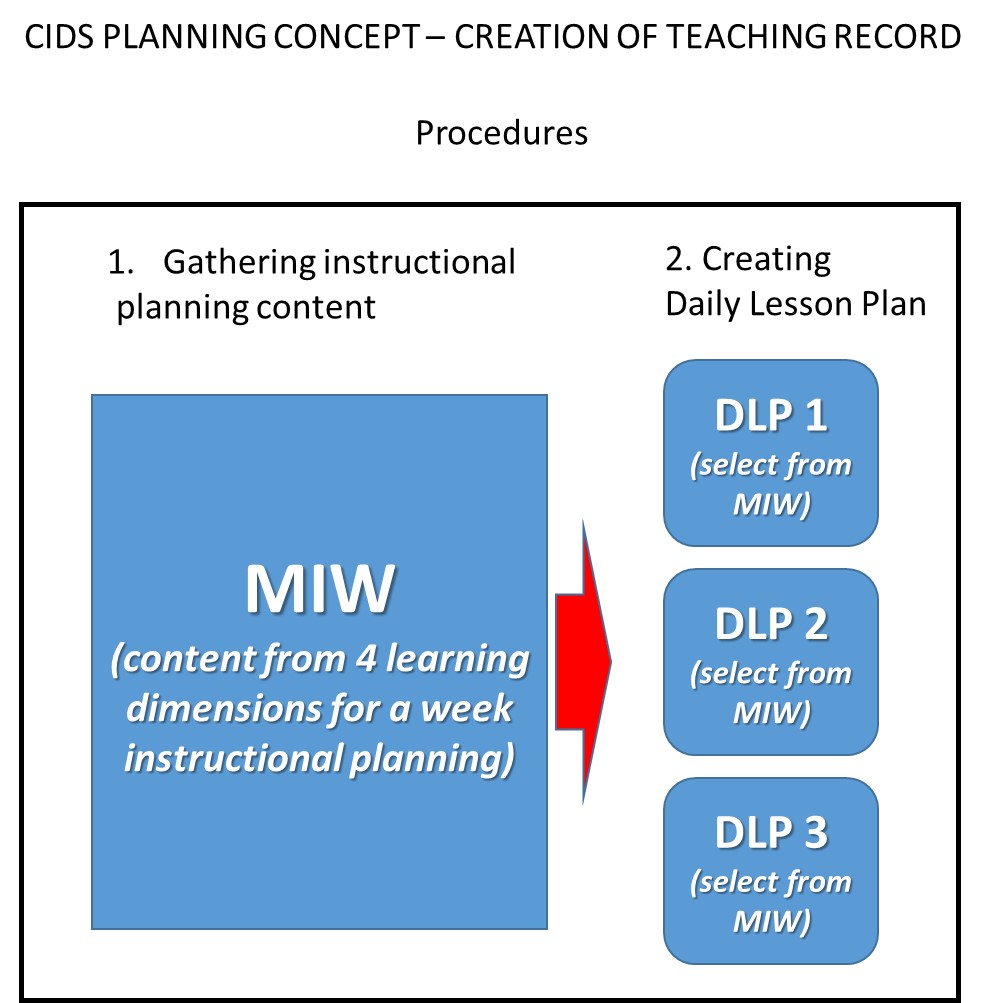
Example 2 – Comparison of A Typical Lesson Plan and CIDS Lesson Plan
CIDS Lesson Plan – is a set of Record – composed of MIW (master template for a week instructional content) & DLPs (Daily Lesson Plan Activities created for each lesson).
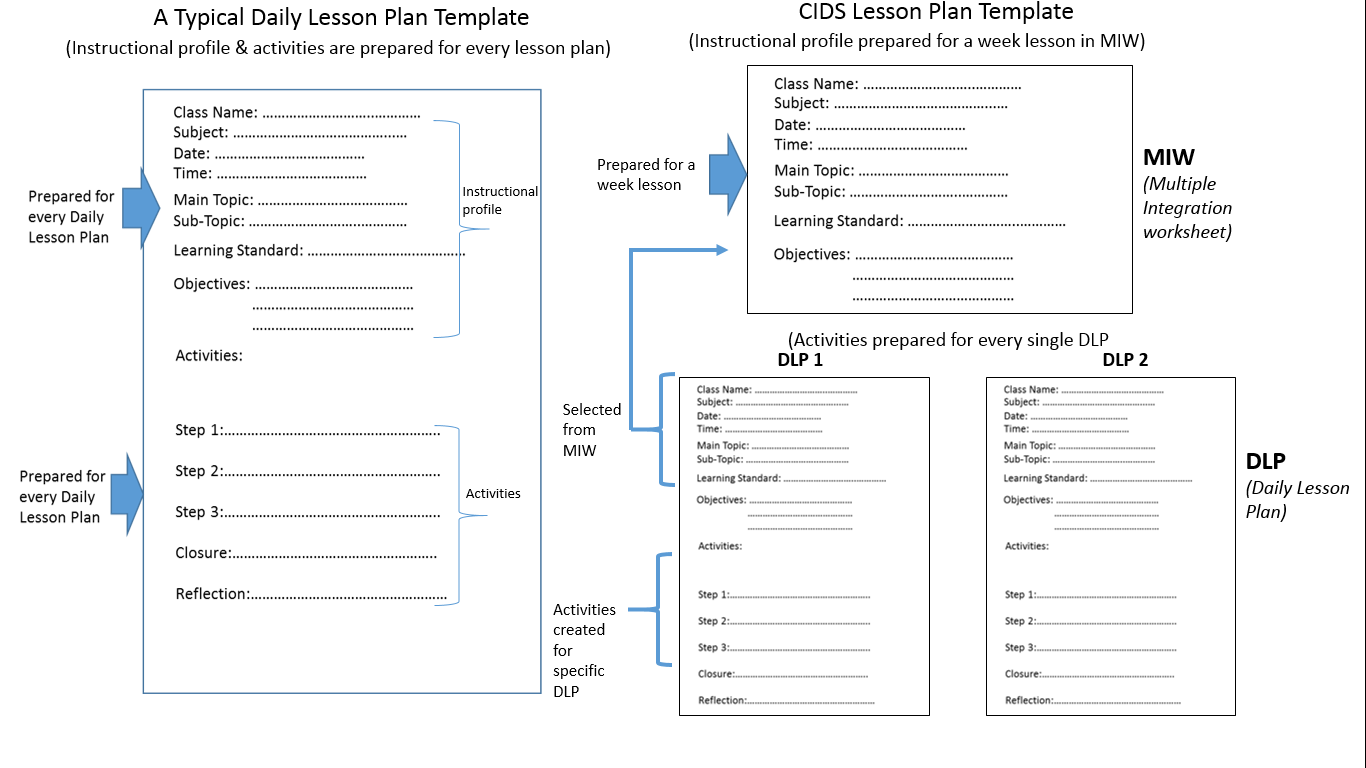
(2) The Four-Dimensional Education
- The 4-Dimensional Education (4DEdu) framework has been adapted as the 21st Century Learning Framework in the Collaborative Instructional Design System (CIDS). The 4DEdu-CIDS guides user in the instructional planning: redesigning, reconstructing, and reengineering academic directions, visualizing the current Education landscape towards preparing learners’ future career path that is relevant to the Fourth Industrial Revolution.

![]() Charles Fadel
Charles Fadel
Global Education Thought Leader, Author, Futurist, Inventor,
Founder & Chairman, Center for Curriculum Redesign, USA
Project Director at Harvard Graduate School of Education, USA
- The Four-Dimensional Education encompasses the following dimensions and competencies.
- Each competency is breaking up into sub competency which describes learners’ outcomes. It is adapted in CIDS as an important items in the instructional planning.
Dimension 1 – Knowledge
Competency: Themes – Essential Content: disciplines, branches, subjects, topics Core Concepts (including processes), lesson objectives etc.
Sub-competency: the descriptions / content in the competency
Dimension 2 – Skills
Competency:
- Creativity
- Critical Thinking
- Communication
- Collaboration
Sub-competency: the descriptions / content in the competency
Example for Dimension 2: Skills
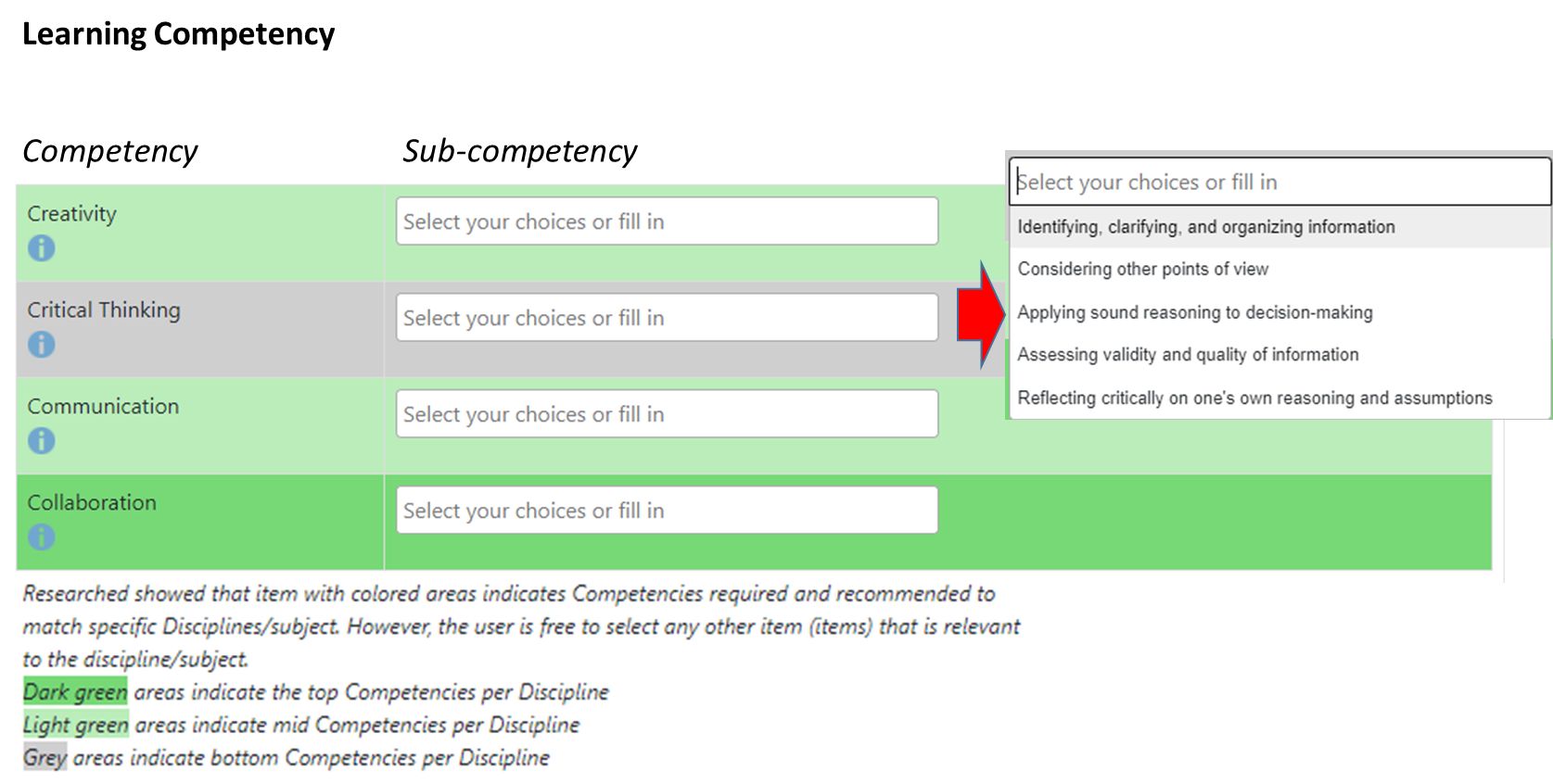
Dimension 3 – Character
Competency:
- Mindfulness
- Curiosity
- Courage
- Resilience
- Ethics
- Leadership
Sub-competency: the descriptions / content in the competency
Dimension 4: Meta-Learning
Competency:
- Metacognition
- Growth Mindset
Sub-competency: the descriptions / content in the competency
The summary is illustrated in the figure below:

(Source: Center for Curriculum Redesign, 2015,2019)
(3) An Integral ASIE Instructional Design Model
- It composes of 4 components with several dimensions.
- Dimensions in the 1st and 2nd components (ANALYZE & STRATEGIZE) serve as a procedural flow of the instructional planning.
- While the 3rd component (IMPLEMENT) involves the creation of the teacher’s lesson plan, the 4th component (EVALUATE) serves for evaluation purposes.
The Structure of The Integral ASIE Instructional Design Model
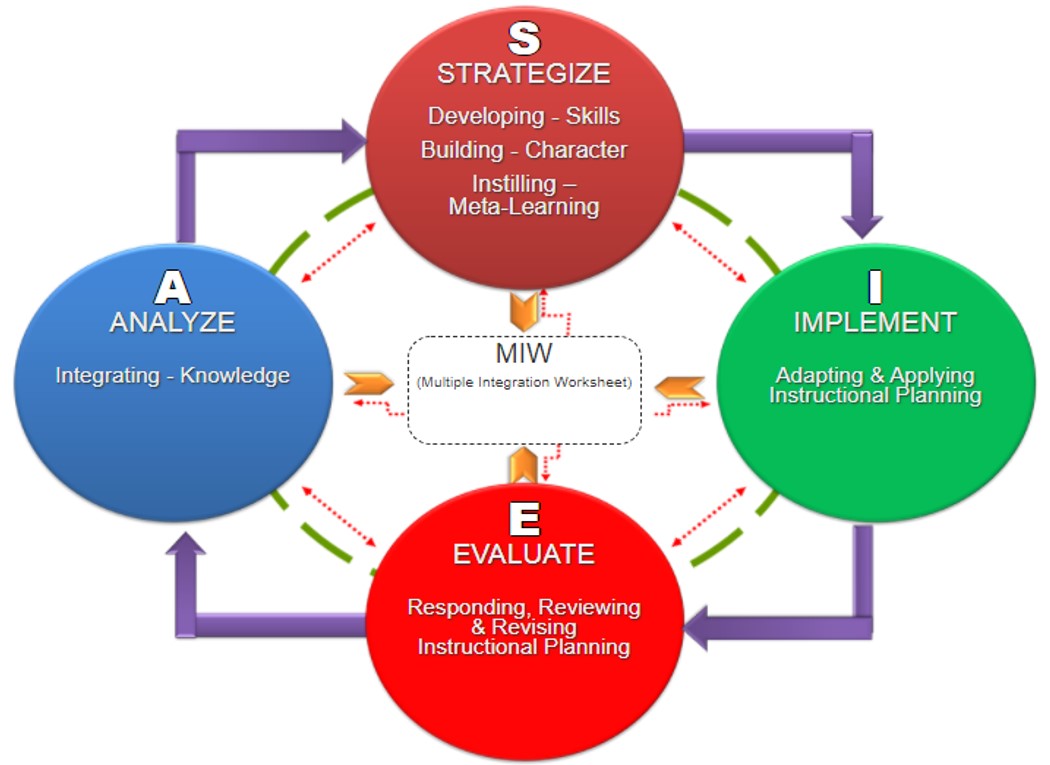

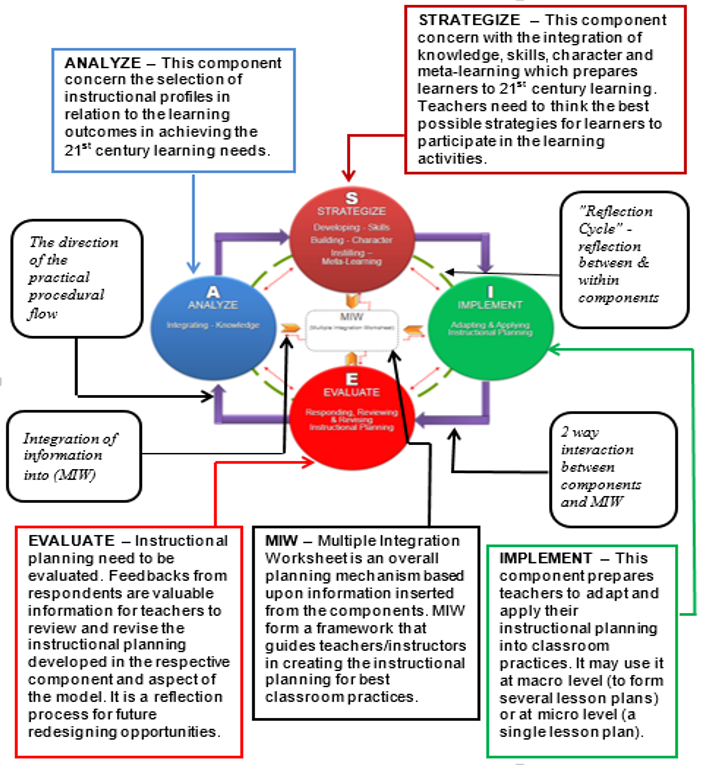
The Composition of The Integral ASIE Instructional Design Model
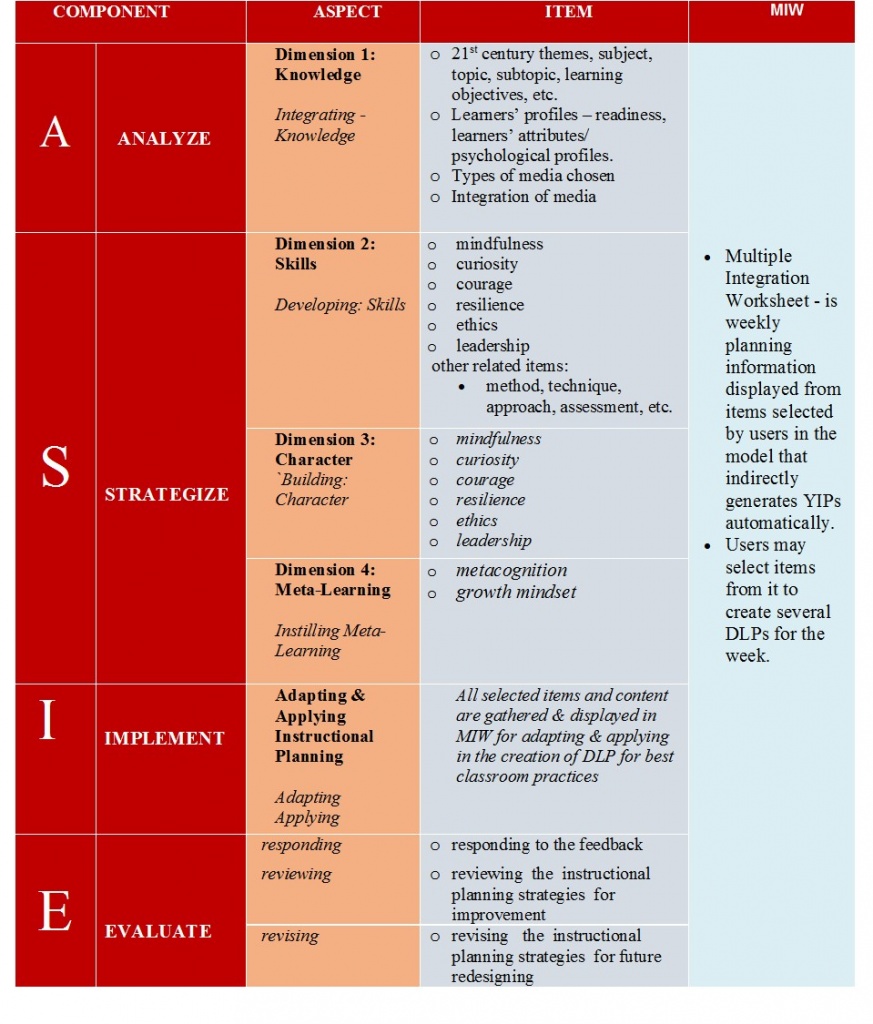
Relationship Between CIDS-4DEdu

B. AIM
- The main aim of the development of the Collaborative Instructional Design System (CIDS) is to provide a platform for teachers to perform their instructional planning and implement appropriate teaching and learning strategies in a virtual environment.
- A research process on the usability has been conducted and improvements have been made occasionally to enhance its effectiveness. Verification from local and foreign educational figures as well as from the Center for Curriculum Redesign, US has been made.
Features of CIDS:
- The platform helps teachers to unpack the curriculum standard to meet the needs of Education 4.0 as well as the needs of current and future education in the era of Industrial Revolution 4.0 (IR4.0).
- It can be adapted & integrated with external sources (YouTube etc., Google Classroom application package, etc.) in the teacher lesson planning process.
- Its features can be customized according to the creativity of teachers in a differentiated classrooms environment to achieve learners’ outcomes in their respective schools.
- Provide an instructional planning framework for STEM, STEAM, STREAM, Flipped Learning & Differentiated Learning strategies.
- Provide a customized structural framework for co-curricular activities, lesson study activities, assessing teachers’ competency, and conducting virtual & flipped learning activities for students.
C. ID AND ITS FUNCTIONS
(1) Types Of ID
CIDS offers free IDs to 4 types of users
- asieguest (for trial only) with limited features. You may not be able to design your lesson for individual needs. All features (class category, class level, subject, teaching period & time table) have been preset regardless of the country origin. Please do not change the setting to avoid errors.
- cidsuser (standard package – stand-alone) individual user.
- cidsuser (institutional package) IDs given to the entire institution.
- Separate IDs will be given to administrators (upon request) at district/state/national/country levels for monitoring/evaluation purposes. They can access teachers’ records at the respective level.
- Each user is given an ID for a specific role/multiple roles. Make sure you get the correct ID type. Each person needs to have 1 (one) ID ONLY.
- ID names vary by State/Country. Each ID is followed by a number. Please remember the ID number provided. By default, a password is provided. You need to change it (minimum of 8 characters) for security purposes.
- In the event of a change of out/in school/within & outside the district/state, the ID does not need to be changed, just change the relevant information on the Profile Menu – Edit My Profile.
D. TERMINOLOGY
- Collaborative Instructional Design System (CIDS) – an application system for instructional design covering various dimensions of instructional planning for teachers, administrators, and learning strategies for students, to meet the educational needs of local and global levels.
- An Integral ASIE Instructional Design Model – Instructional Design Tool (based on the principles & theory of instructional design) that provides a flow of professional & systematic instructional planning procedures.
- Professional Learning Community (PLC) – guide the implementation of Lesson Study activities, participating in various communities to share information, resources, assist teachers in the T&L process through e-forums, chat, video conferencing, and online learning.
- Competency & Sub-Competency – skills that students need to master (learning outcomes)
- Components – four (4) components that have several dimensions in the Model for the instructional planning process.
- Dimension – aspects of planning found in each component of the model which are adapted from the Four-Dimensional Education Learning Framework (Center for Curriculum Redesign, 2015, 2019).
- Items – several planning items in each aspect that can be customized by the user.
- YIP – Yearly Lesson Plan which contains several weekly lesson plans.
- MIW – Multiple Integration Worksheet – is weekly planning information displayed from items selected by users in the model that indirectly generates YIPs automatically. Users may select items from it to create several DLPs for the week.
- DLP- Daily Lesson Plan – derived from selected items of MIW.
- Instructional Events – Steps of Teaching & Learning activities in DLP.
- Record – refers to a complete set of teacher lesson plans (MIW & DLPs) created.
- Shared Record – complete records submitted for sharing by other users.
- Supervisory Records – a list of teacher planning records under the supervision of an administrator.
- Modular Learning – A type of learning that offers a combination of subjects (example – mathematics & science) for (i) a same class level – single class (example – 1st Grade) – or for (ii) a combination of different class level & different subjects – combined class & combined subject (example 1st Grade & 2 Grade, mathematics & science)
- Links to Share Resources – the process of uploading video clips, images, and information from the internet or materials from local folders to be uploaded to CIDS for sharing.
- Links to Teaching Evidence Sources – the process of uploading materials from various sources as evidence of teaching activities carried out by teachers (examples: pictures of fieldwork, reports, student activities, etc.)
- Teaching Time – a schedule of teaching time table created by a teacher for the system, especially on setting of date and time of the Daily Lesson Plans.
- CIDS-VideoCorps – A virtual communication tool for CIDS users and guests.
- E-Forum –Student virtual interaction session with materials posted by teachers.
E. THE INTEGRAL ASIE INSTRUCTIONAL DESIGN MODEL FEATURES
- It is exhibited in the following displays:
CIDS Main Menu

The First and Second component consists of Dimension – competency & sub-competency that is required by learners (learner’s outcome).
First (1st) Component – ANALYZE
Dimension 1 – Integrating-knowledge
Items (competency & sub-competency):
- 21st Century Themes
- other necessary pedagogical planning items such as Main topic, Subtopic, Learning objective etc. (customizable)
- learners’ readiness
- type of media
- or other required items
REMARK: Teachers may select content in the items that are relevant to their instructional planning. They may customize the item – fill in or copy/paste the content or add new items.
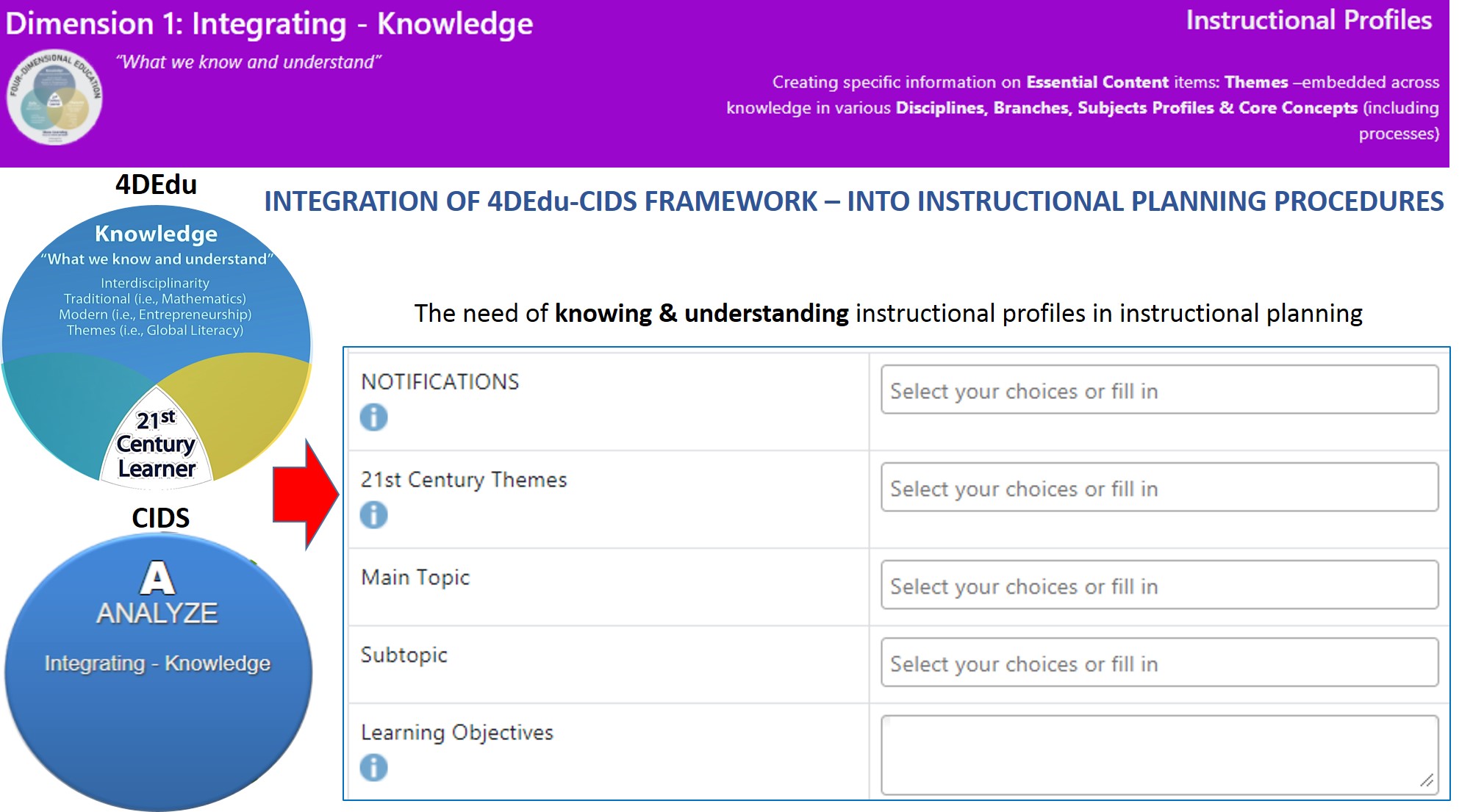
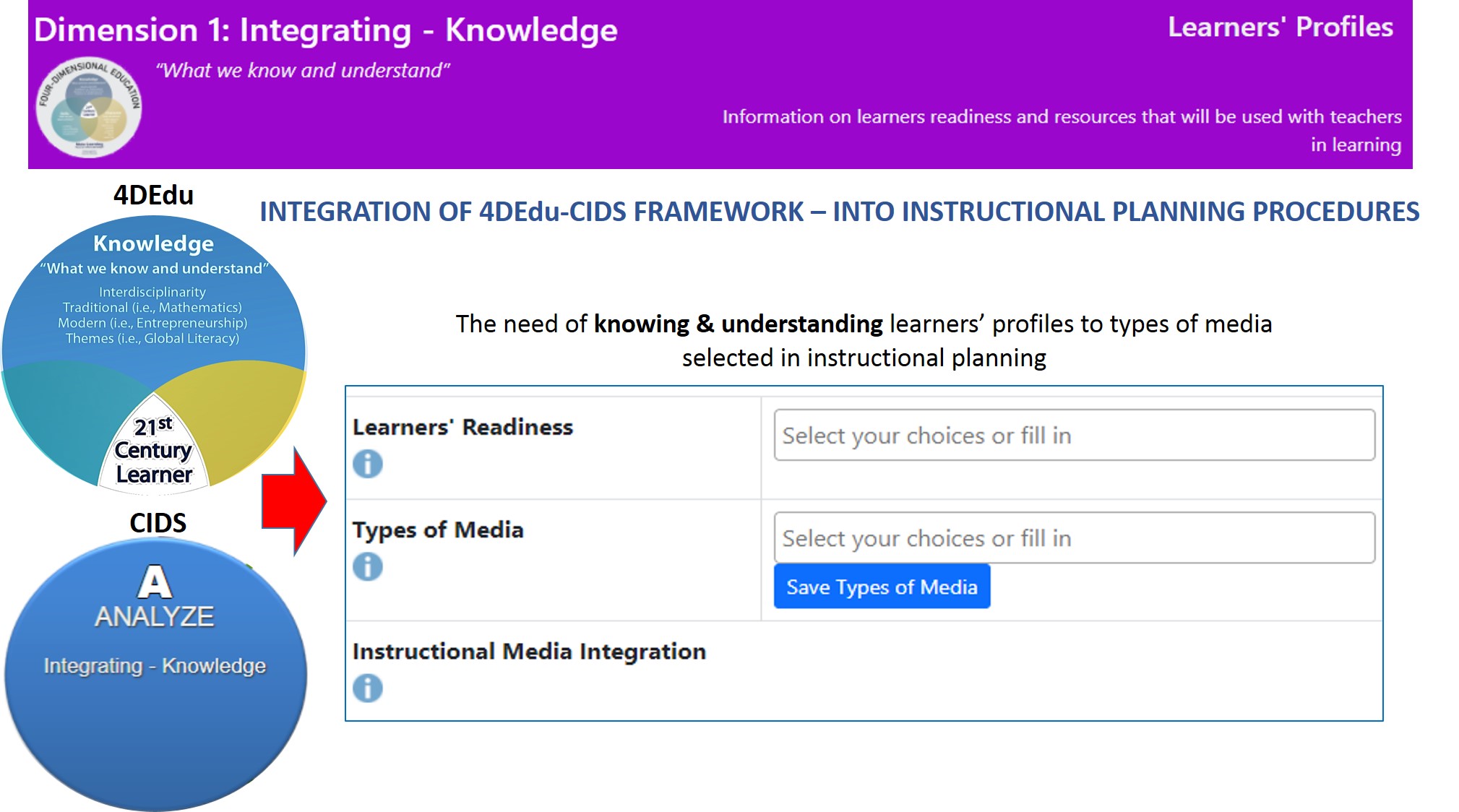
Second Component – STRATEGIZE
Dimension 2 – Developing – Skills
Items (competency & sub-competency):
- creativity
- critical thinking
- communication
- collaboration
- or other pedagogical planning items such as method, technique, approach etc. (customizable)
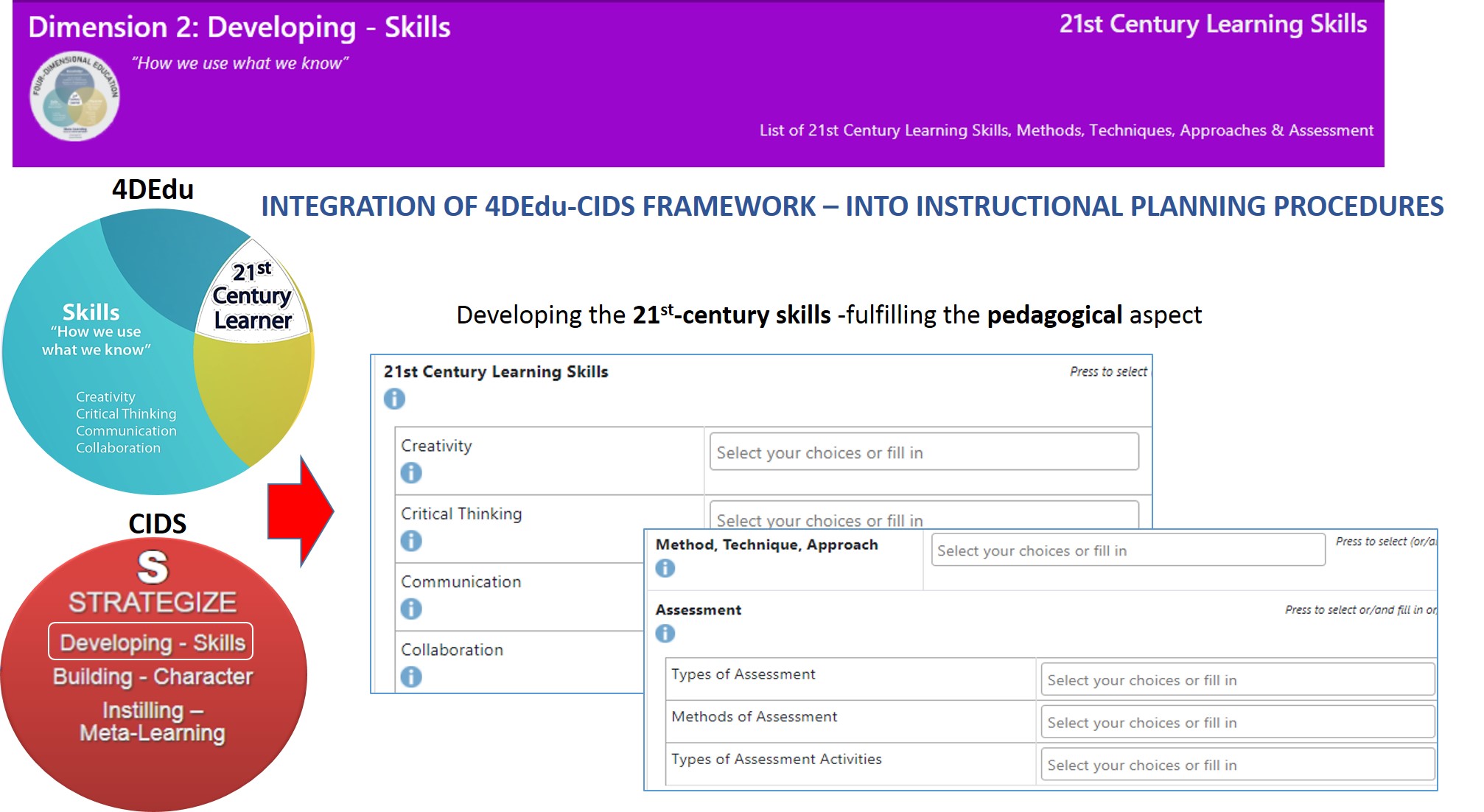
Dimension 3 – Building – Character
Items (competency & sub-competency):
- mindfulness
- curiosity
- courage
- resilience
- ethics
- leadership
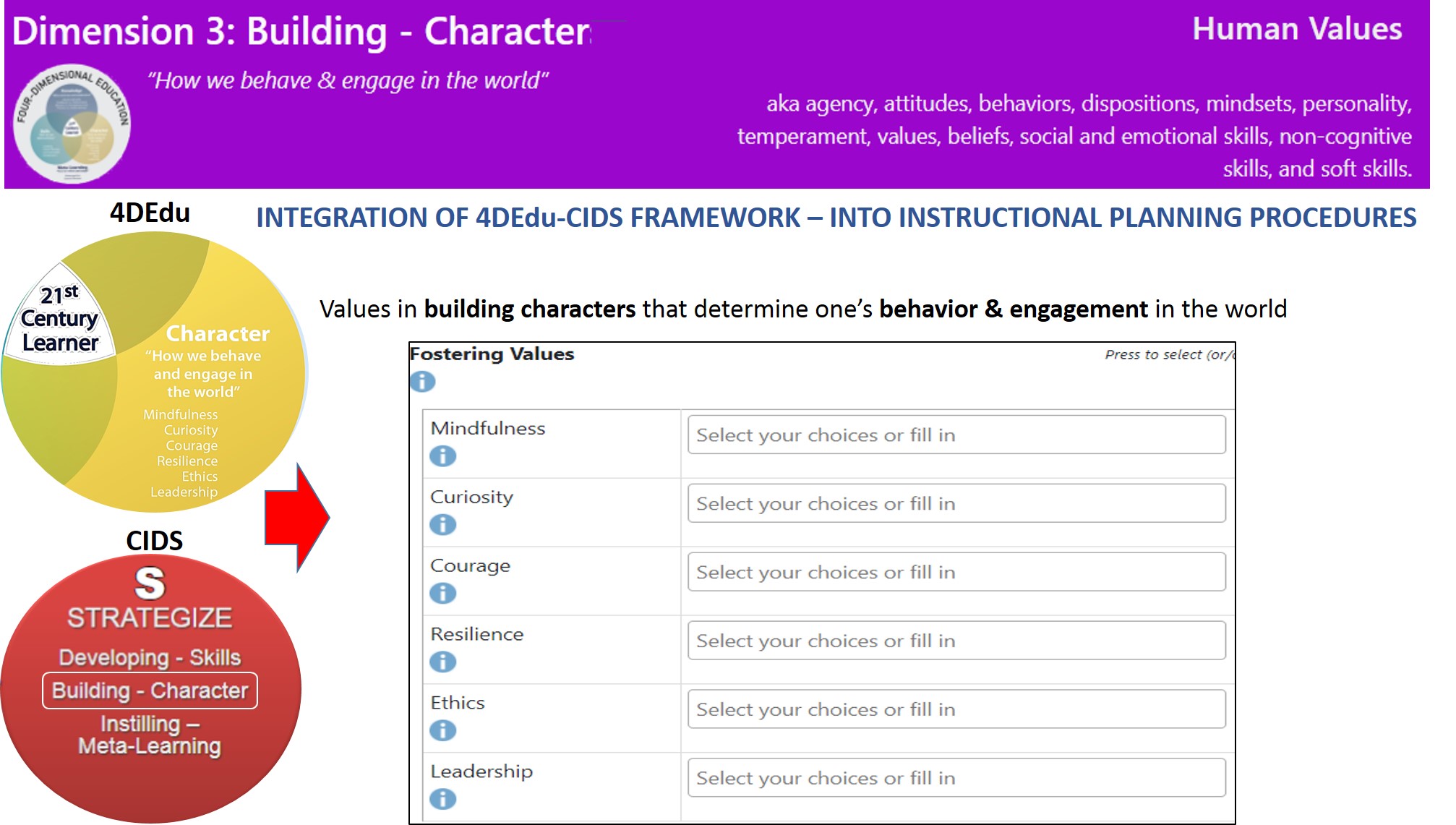
Dimension 4 – Instilling – Meta – Learning
Items (competency & sub-competency):
- metacognition
- growth mindset
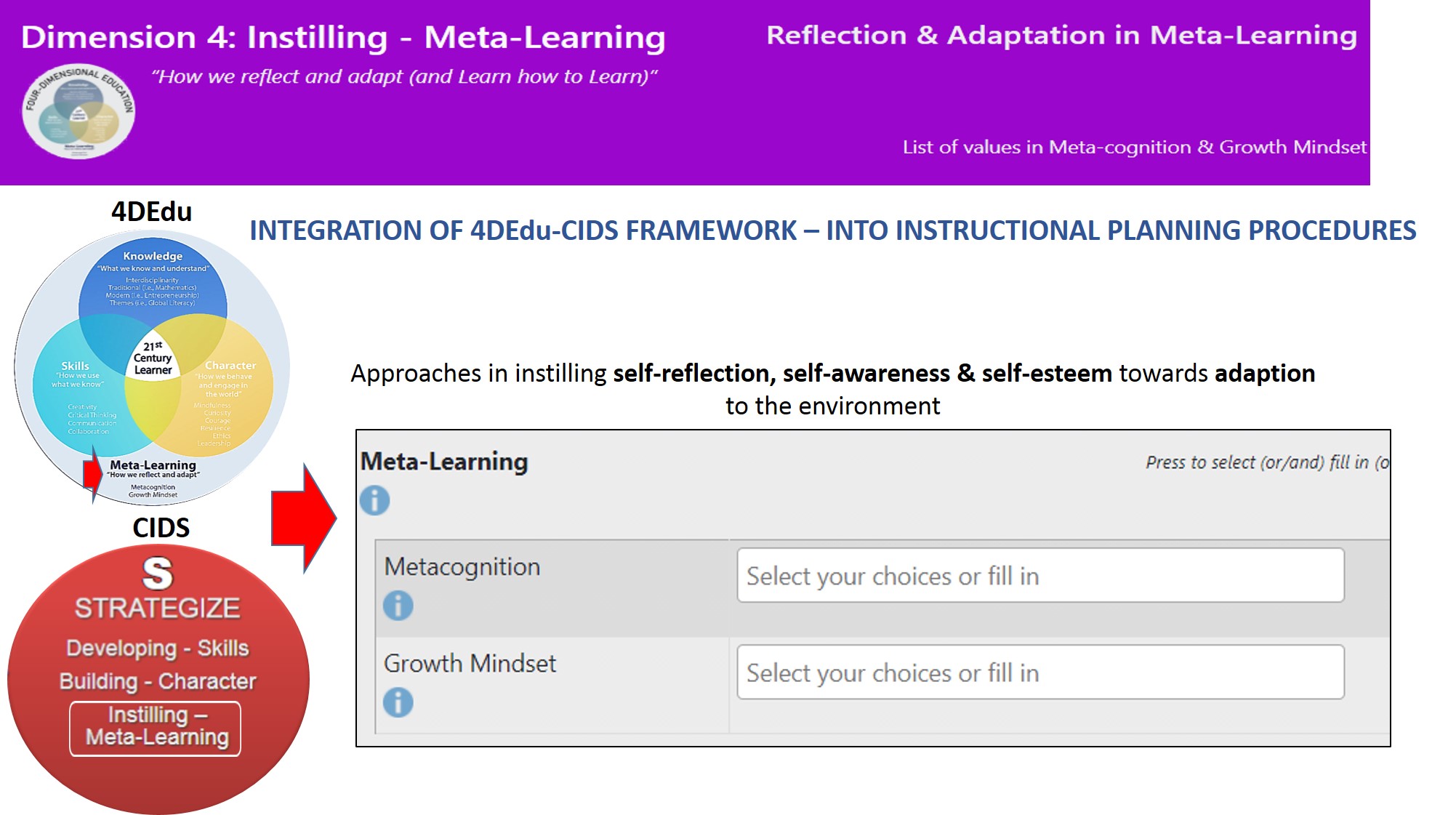
Third Component – IMPLEMENT
In the third component (Implement), items selected will automatically be inserted in the Multiple Integration Worksheet (MIW) for the creation of Daily Lesson Plans (DLPs).
‘
Multiple Integration Worksheet (MIW)

F. EVALUATION
Fourth Component – EVALUATE
The Fourth Component provides an evaluation of instructional plans which are available in 3 ways:
- Lesson Study –Lesson study is a form of classroom inquiry in which several teachers collaboratively plan, teach, observe, revise and share the results of a single class lesson.
- Daily/weekly monitoring/verifying lessons plans – for all administrative levels.
- Evaluation of Teachers’ Competency (ETC) –General evaluation of teachers instructional planning and classroom practices for improving and sustaining the standard quality.
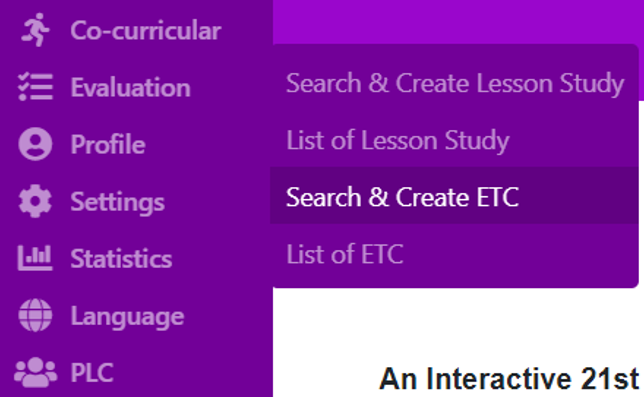
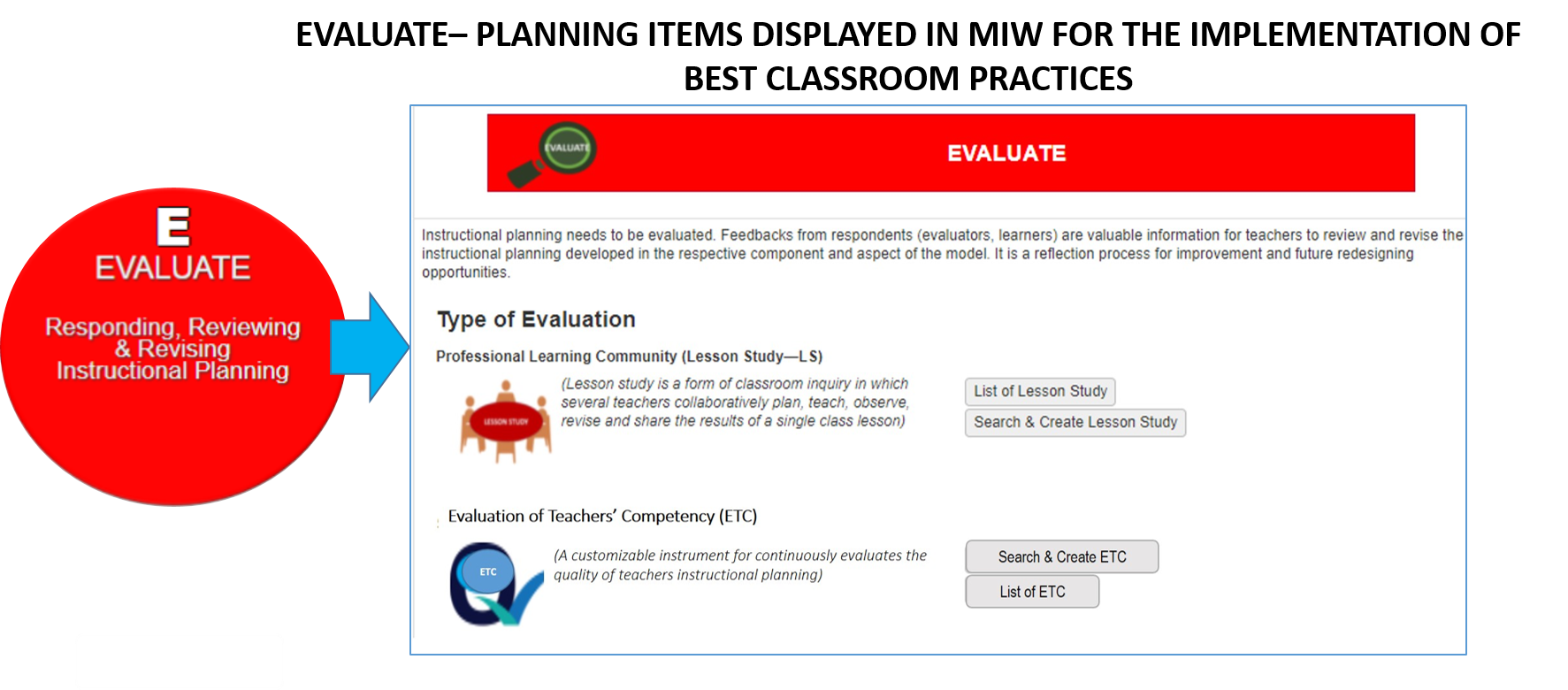
G. ENHANCING INSTRUCTIONAL ACTIVITIES
There are optional features available in enhancing the teaching and learning activities to create an informative, interesting, and inspiring teaching & learning environment.
(a) Insert external resources in to the lesson plan (images, video clip) & display/link to the resources
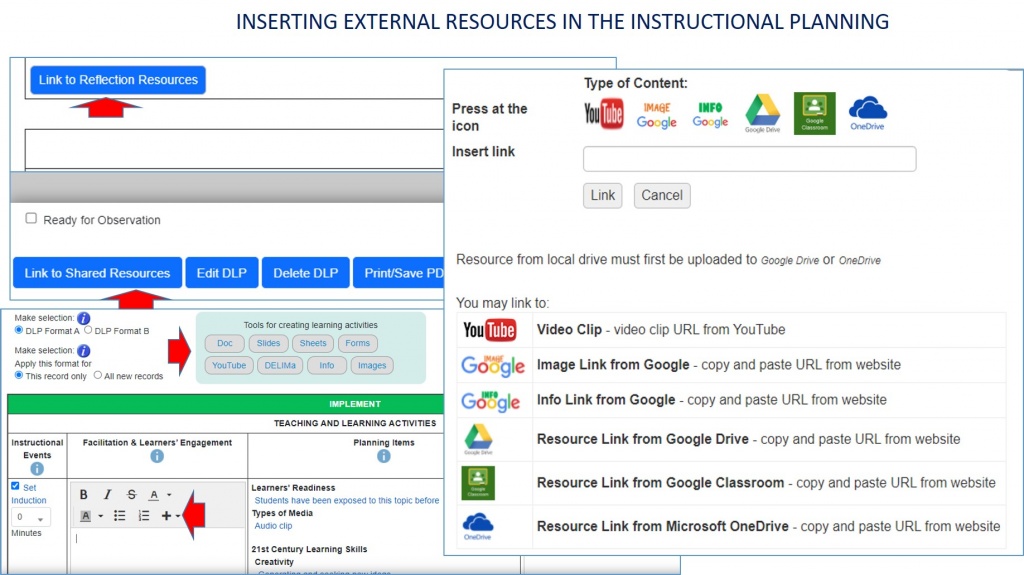
(b) Integrating & Displaying of resources in the lesson plan

H. OTHER FUNCTIONS & FEATURES
1. The Implementation of Lesson Study

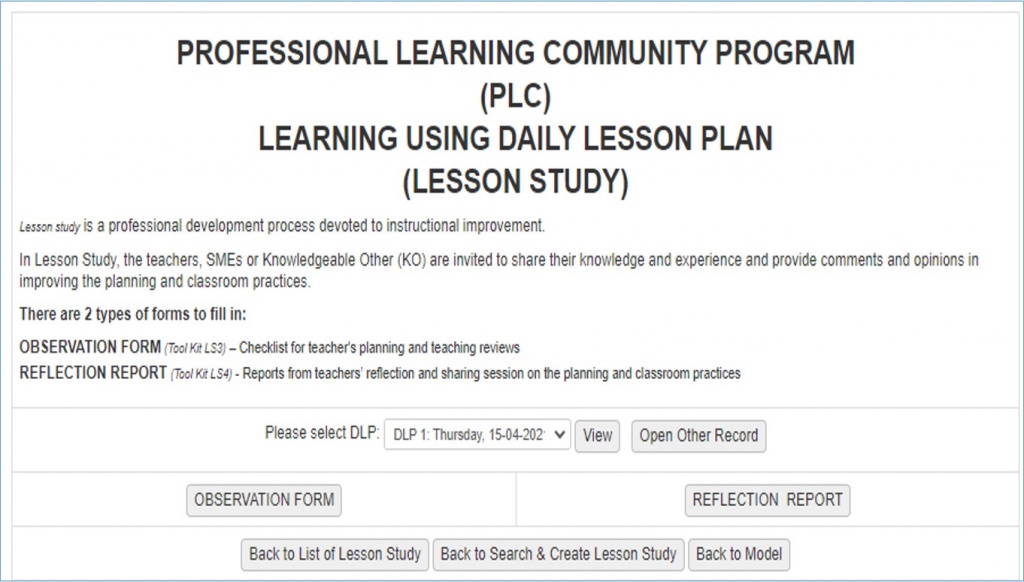
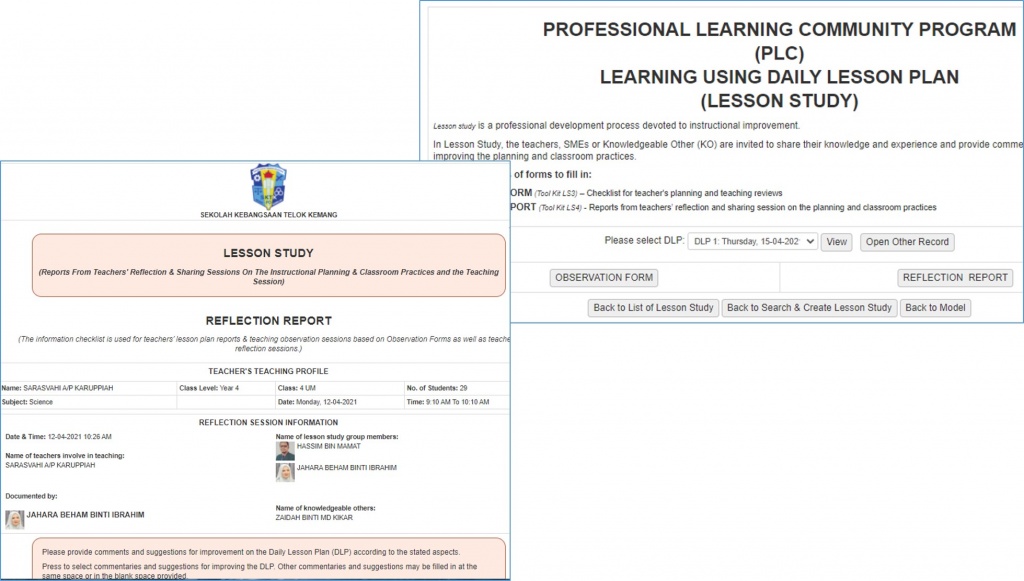
3. Evaluation of Teacher Competencies (ETC)
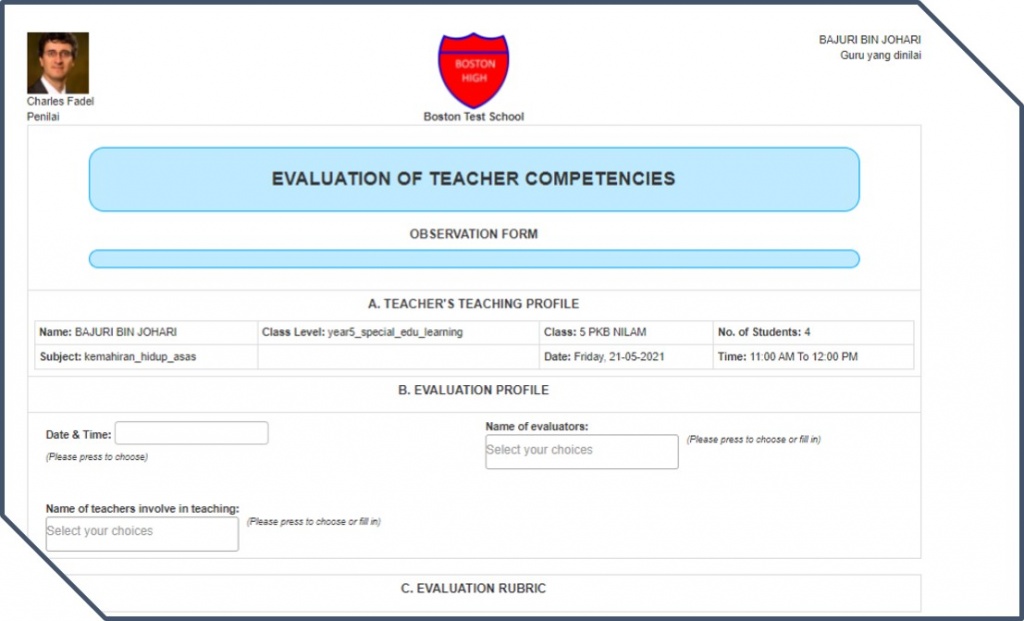
4. Virtual Learning
- Provides a simple e-forum platform for teacher-student interaction
- CIDS – VideoCorps – virtual communication for small group discussion
(i) E-Forum
- e-learning program for home-based activity.
- students may register themselves or registered by teachers
- teachers may post learning content (video clips/images/links) on the forum
- students may response/discuss
- chatting feature is available


(ii) Communication – CIDS-VideoCorps
Virtual interaction – CIDS-VideoCorps
- small group discussion
- shared notes
- chatting
- screen sharing
- dual webcams
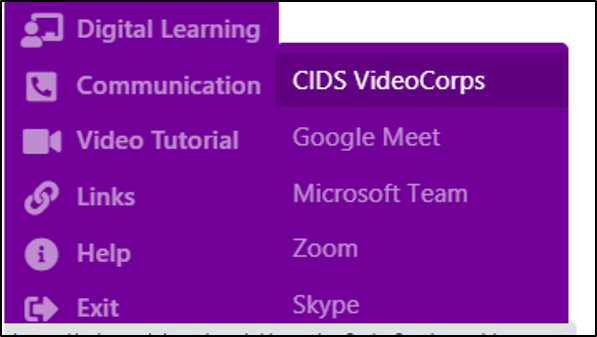
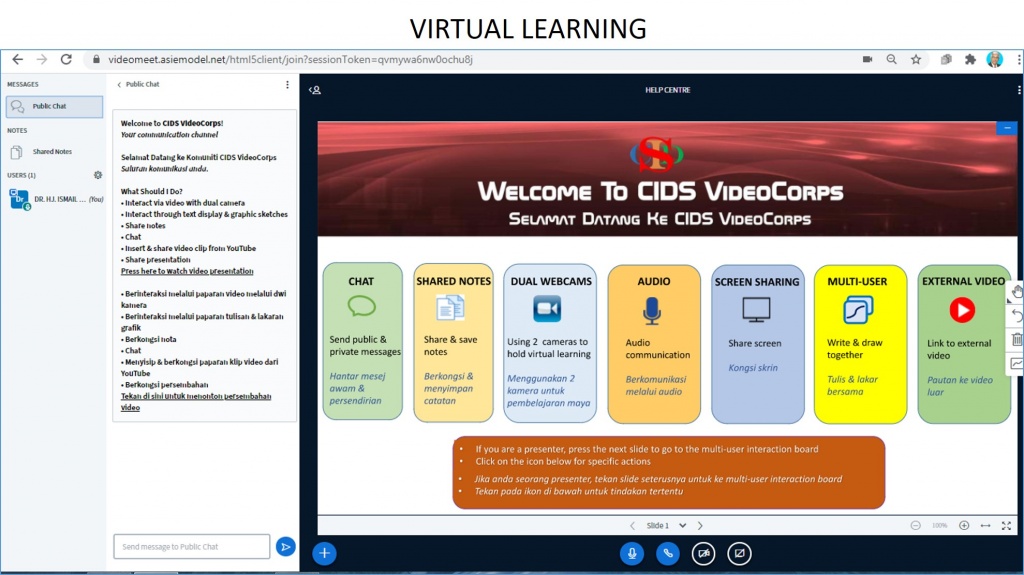
I. BUTTON – FUNCTIONS
Buttons are available for specific functions. Besides, information icons are placed in every item which provides information to users on the planning procedures. Examples are shown below:
- Create Record

2. Record Management (1)

3. Record Management (2)
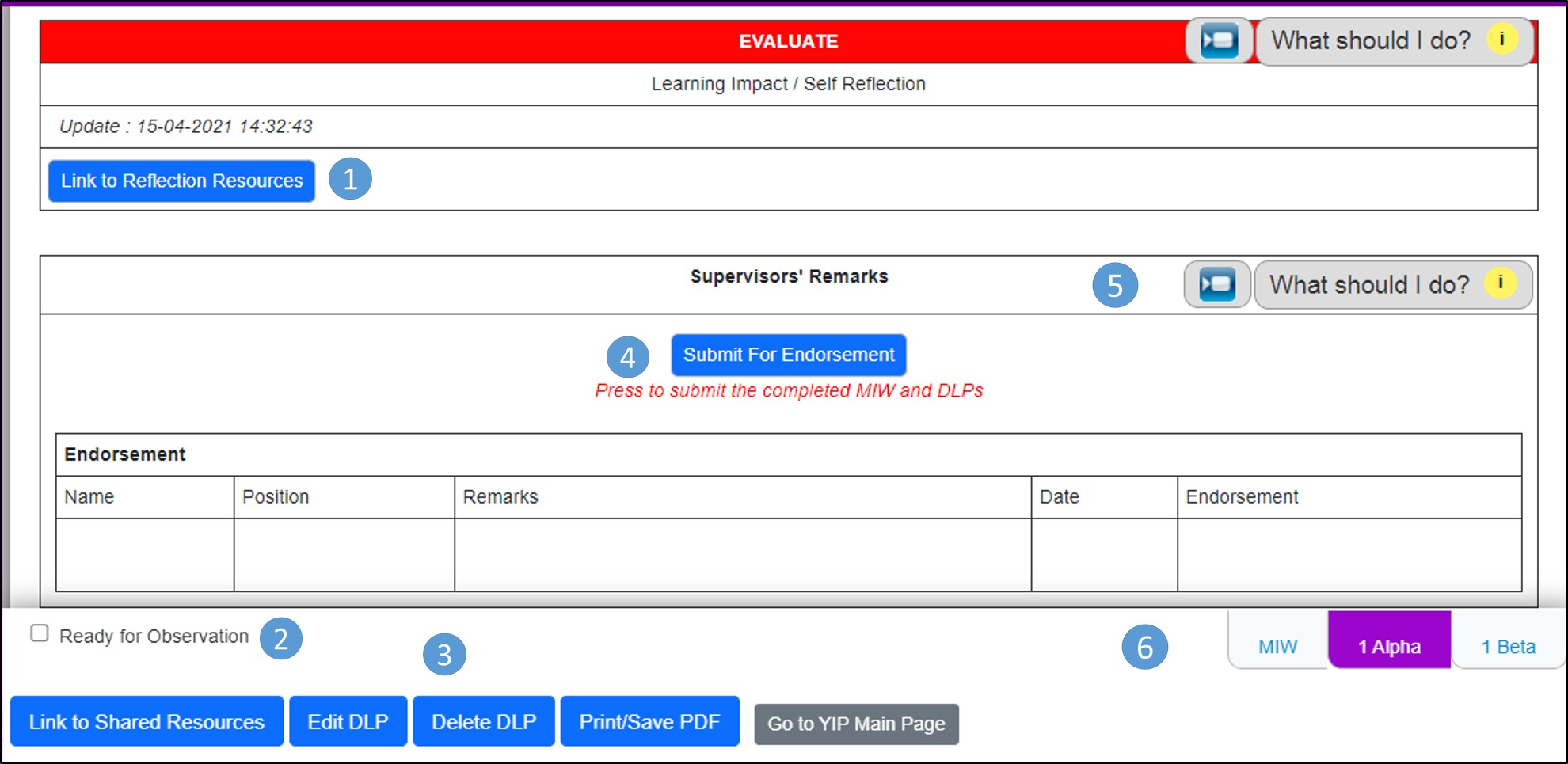
4. Statistical analysis
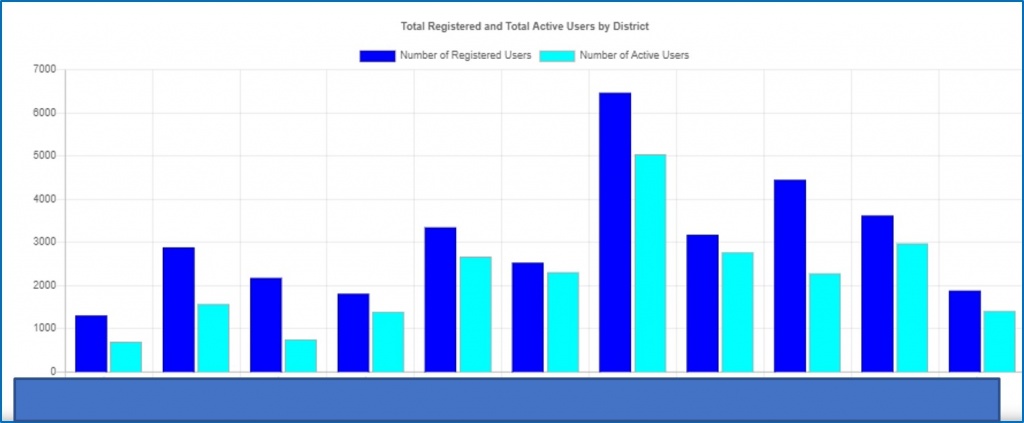
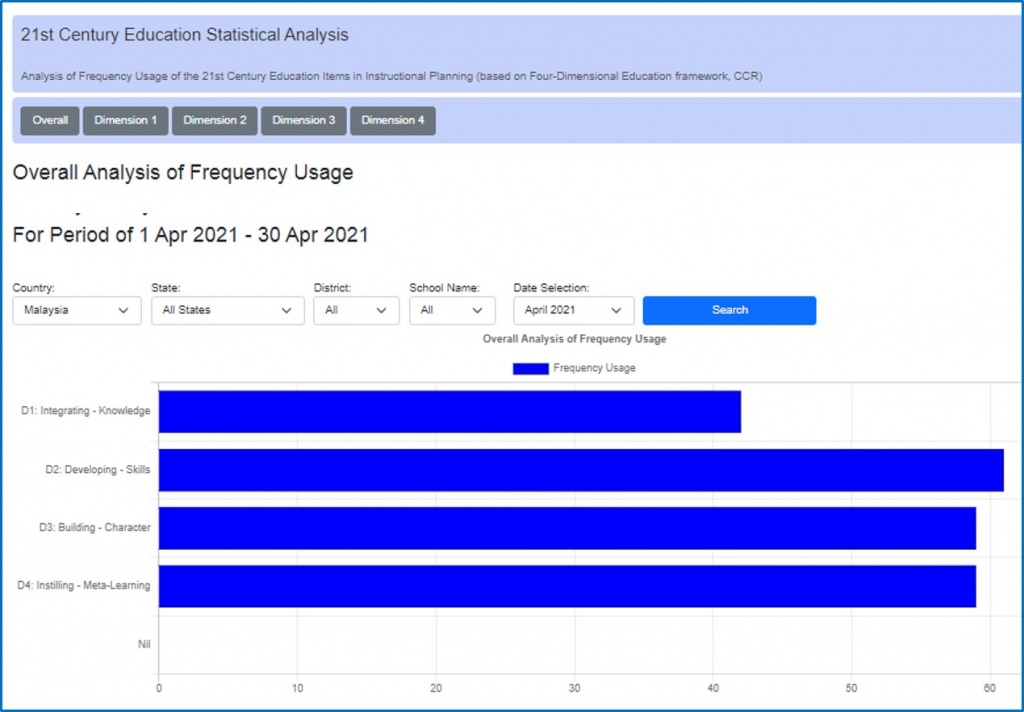
J. SUMMARY
The above information is summarized as follows:
The main framework of CIDS is adapted from the Four-Dimensional Education, CCR (2015, 2019) while other supplementary planning items are added.
- The Main features of CIDS are as follows:
(a) Creating Instructional plans – using The Integral ASIE Instructional Design Model:
- Provides an option to design instructional plan for normal class or home-based learning environment.
- Provides an option to design lesson for Modular Learning or STEM/STEAM/STREAM learning project (project-based learning).
- Insert/link instructional materials from various sources.
- Copy/Share/Save as PDF/Print option
- Monitoring/verifying/guiding/evaluating features for administrators.
- Provides user statistical analysis & user pedagogical analysis.
(b) Optional Features
- Provides features to create Lesson Study activities
- Provides proposed rubric (customizable) for Evaluating of Teacher Competencies (ETC)
- Provides features to create chat rooms for E-Forum in the Professional Learning Community
- Enable to participate in E-Forum as a means of Home-Based Learning activities
- Provides CIDS-VideoCorps – feature for virtual interaction
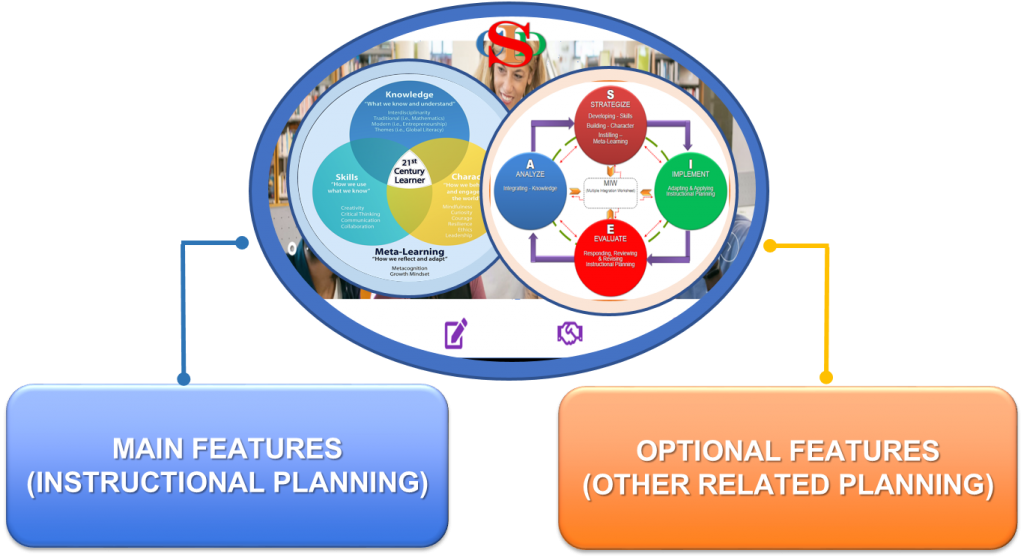
Most of the items are highly customizable – giving user autonomy to design the instruction (unpacked the curriculum) according to their needs.
Please look at the menu – User Manual (Getting Started) for details planning guidance.

